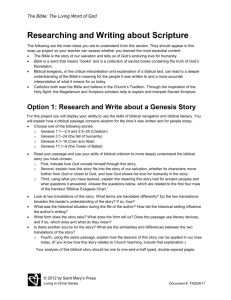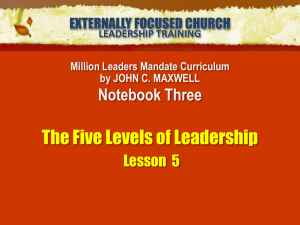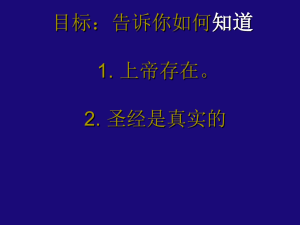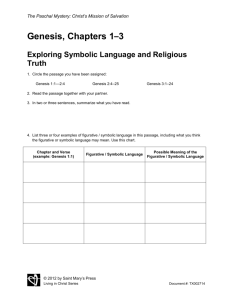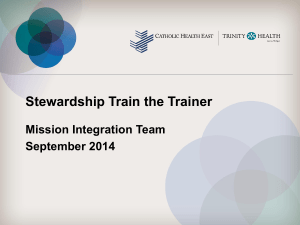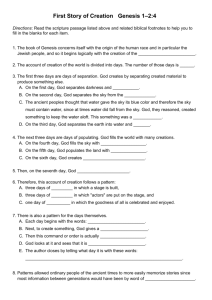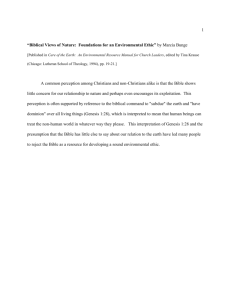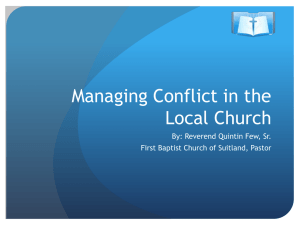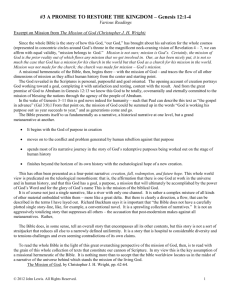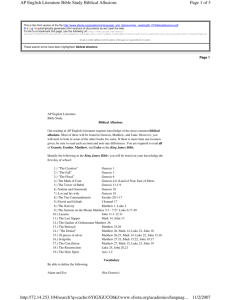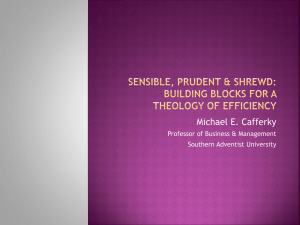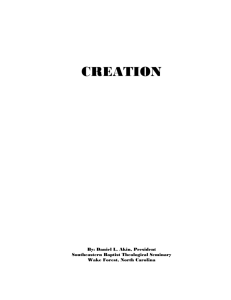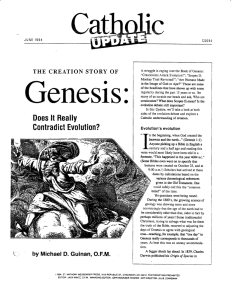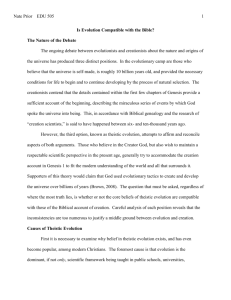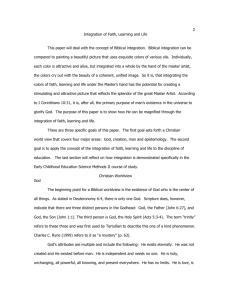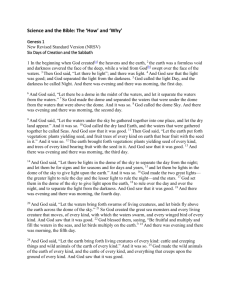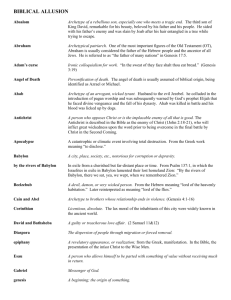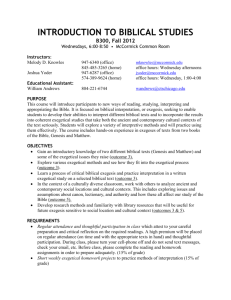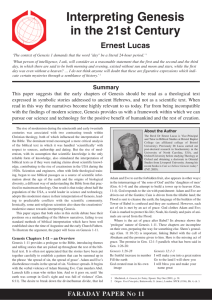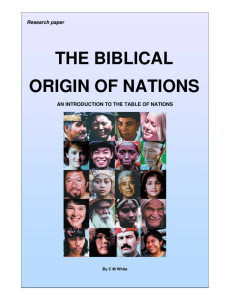Final Performance Task Options for Unit 1
advertisement
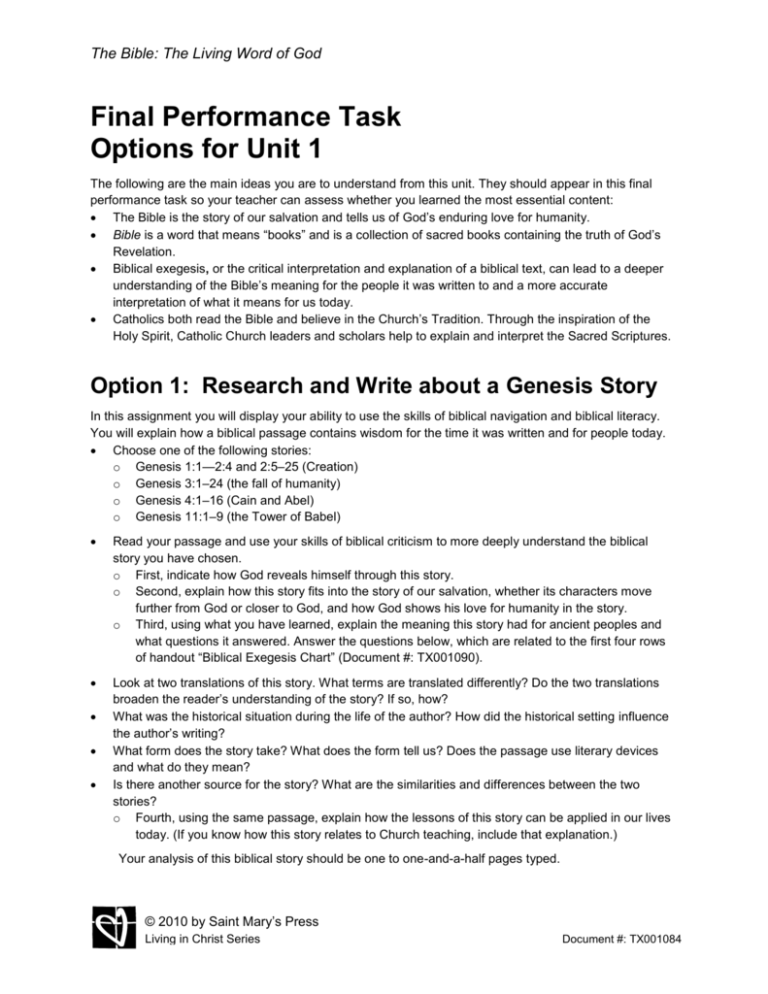
The Bible: The Living Word of God Final Performance Task Options for Unit 1 The following are the main ideas you are to understand from this unit. They should appear in this final performance task so your teacher can assess whether you learned the most essential content: The Bible is the story of our salvation and tells us of God’s enduring love for humanity. Bible is a word that means “books” and is a collection of sacred books containing the truth of God’s Revelation. Biblical exegesis, or the critical interpretation and explanation of a biblical text, can lead to a deeper understanding of the Bible’s meaning for the people it was written to and a more accurate interpretation of what it means for us today. Catholics both read the Bible and believe in the Church’s Tradition. Through the inspiration of the Holy Spirit, Catholic Church leaders and scholars help to explain and interpret the Sacred Scriptures. Option 1: Research and Write about a Genesis Story In this assignment you will display your ability to use the skills of biblical navigation and biblical literacy. You will explain how a biblical passage contains wisdom for the time it was written and for people today. Choose one of the following stories: o Genesis 1:1—2:4 and 2:5–25 (Creation) o Genesis 3:1–24 (the fall of humanity) o Genesis 4:1–16 (Cain and Abel) o Genesis 11:1–9 (the Tower of Babel) Read your passage and use your skills of biblical criticism to more deeply understand the biblical story you have chosen. o First, indicate how God reveals himself through this story. o Second, explain how this story fits into the story of our salvation, whether its characters move further from God or closer to God, and how God shows his love for humanity in the story. o Third, using what you have learned, explain the meaning this story had for ancient peoples and what questions it answered. Answer the questions below, which are related to the first four rows of handout “Biblical Exegesis Chart” (Document #: TX001090). Look at two translations of this story. What terms are translated differently? Do the two translations broaden the reader’s understanding of the story? If so, how? What was the historical situation during the life of the author? How did the historical setting influence the author’s writing? What form does the story take? What does the form tell us? Does the passage use literary devices and what do they mean? Is there another source for the story? What are the similarities and differences between the two stories? o Fourth, using the same passage, explain how the lessons of this story can be applied in our lives today. (If you know how this story relates to Church teaching, include that explanation.) Your analysis of this biblical story should be one to one-and-a-half pages typed. © 2010 by Saint Mary’s Press Living in Christ Series Document #: TX001084 Final Performance Task Options for Unit 1 Page | 2 Option 2: Creatively Imitate Biblical Storytelling Choose one of the following stories from the Torah: o Genesis 1:1—2:4; 2:5–25 (Creation) o Genesis 3:1–24 (the fall of humanity) o Genesis 4:1–16 (Cain and Abel) o Genesis 11:1–9 (the Tower of Babel) o Genesis 12:1–9 (Abram’s call and migration) o Genesis 15:1–21 (the Covenant with Abram) o Genesis 19:1–29 (the destruction of Sodom and Gomorrah) Read the story carefully and answer the following questions in writing: o How does God reveal himself in this story? o How does the story illustrate or explain whether the people in it are coming closer to God or moving further away? How does the story communicate God’s love? o What does the story say to the people of its day? (Look at the form of the story, look up any cultural or historical references, and note the source of the story if known. Make a note of these.) o What does this story tell us about today? Does it relate to a Church teaching you know? If so, which? Write a narrative that could be from an ancient culture. Your invented narrative should be similar in length and style to the biblical narrative. You must be able to defend how your narrative displays the necessary elements for it to be considered a part of ancient oral tradition. © 2010 by Saint Mary’s Press Living in Christ Series Document #: TX001084
